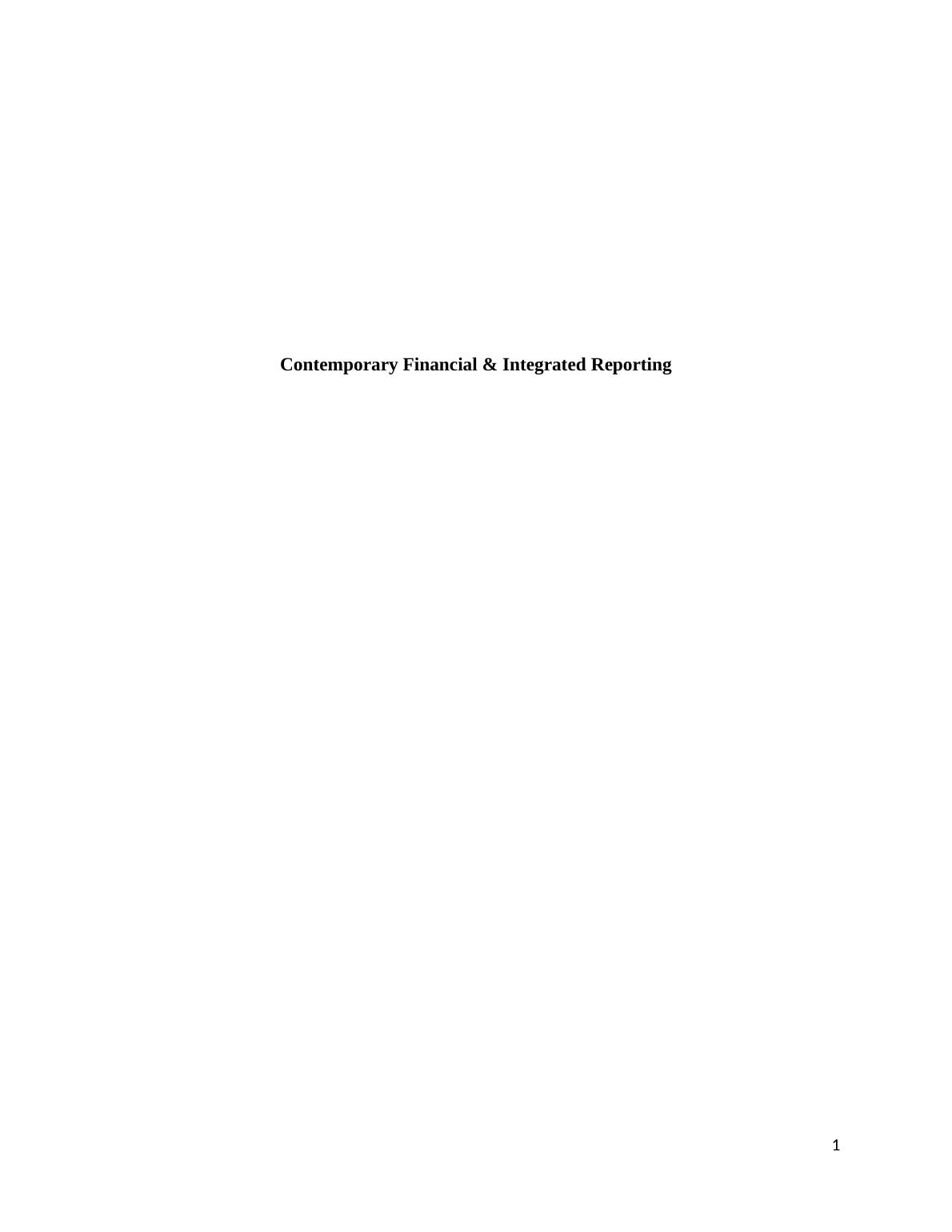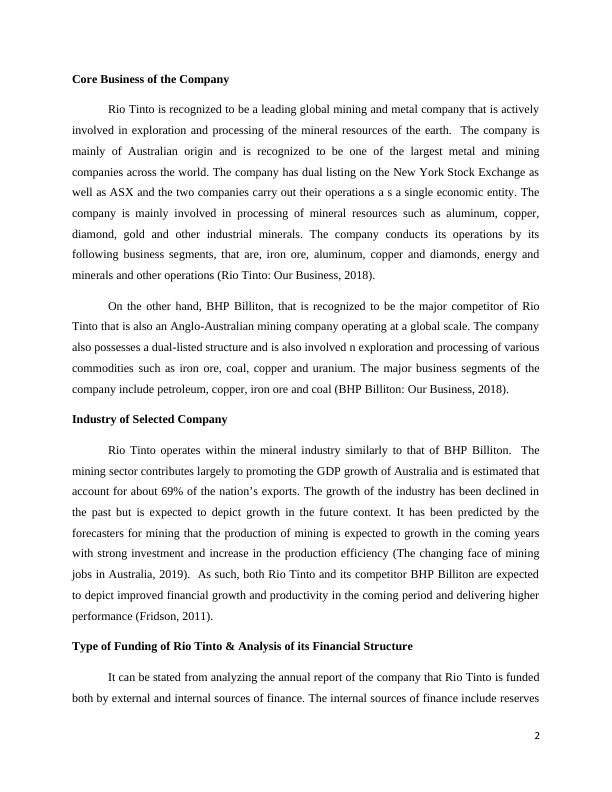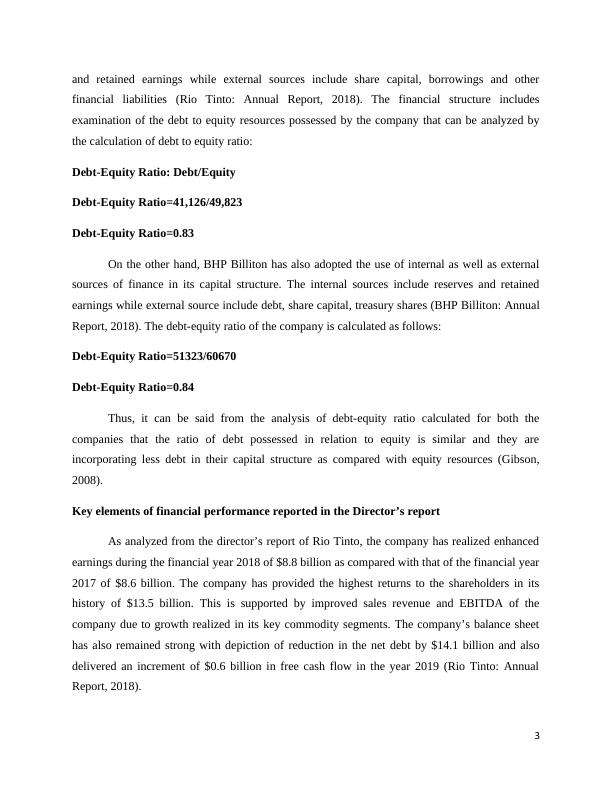Contemporary Financial & Integrated Reporting
Write a business report analyzing the latest annual report of Rio Tinto Limited and comparing it with another competing company from the same industry.
9 Pages1547 Words79 Views
Added on 2023-01-18
About This Document
This document provides an analysis of the core business of Rio Tinto and its competitor BHP Billiton, their financial structures, and performance. It also discusses the mining industry and its future prospects. Additionally, it covers the changes in accounting policies adopted by both companies.
Contemporary Financial & Integrated Reporting
Write a business report analyzing the latest annual report of Rio Tinto Limited and comparing it with another competing company from the same industry.
Added on 2023-01-18
ShareRelated Documents
End of preview
Want to access all the pages? Upload your documents or become a member.
Principles of Financial Markets | Report
|15
|3684
|115
Comparative Analysis of Rio Tinto and BHP Billiton Limited
|21
|3820
|356
Contemporary Financial and Integrated Reporting
|10
|874
|51
Corporate Accounting
|23
|4909
|209
Corporate Accounting
|6
|1084
|120
Financial Management Analysis of BHP Billiton and Rio Tinto Limited
|14
|3153
|103



